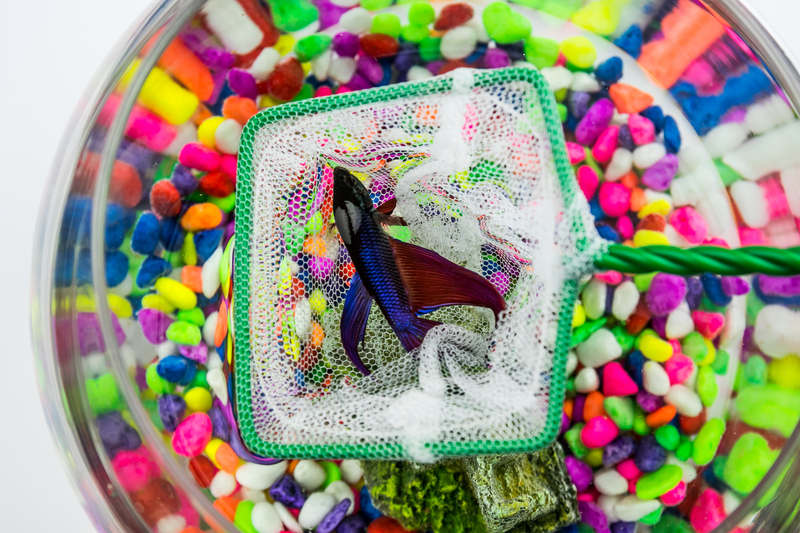Master the Art of Sofa Storage: Expert Tips for Longevity
Posted on 17/05/2025
Master the Art of Sofa Storage: Expert Tips for Longevity
A sofa is often the centerpiece of your living room, providing comfort and style for years. However, there are times when you may need to store your sofa - whether you're moving, renovating, or simply making space. Done incorrectly, storage can lead to lasting damage. But with the proper methods and knowledge, you can ensure your sofa remains in pristine condition. In this comprehensive guide, we reveal how to master the art of sofa storage and provide expert tips for longevity.
Why Proper Sofa Storage Matters
Your sofa is more than just a piece of furniture; it's an investment in your home's comfort and decor. Improper storage can result in problems such as warping, fading, mold, or structural damage. Conversely, correct methods extend the lifespan and appearance of your sofa, saving you money and hassle in the long run.
- Protects Against Physical Damage: Safeguards from tears, dents, and scratches.
- Prevents Moisture and Mold: Reduces the risk of mildew and moisture-related decay.
- Keeps Pests Away: Stops insects and rodents from nesting in your sofa.
- Preserves Upholstery Quality: Prevents fading, staining, and fabric deterioration.

Preparation Is Key: Steps to Ready Your Sofa for Storage
Before you place your sofa in storage, a thorough preparation routine is essential for maximum protection. Follow these expert tips to ensure longevity and durability:
1. Clean Your Sofa Thoroughly
Dirt, crumbs, and oils can degrade fabric and attract pests. Use the correct cleaning method for your sofa type:
- Fabric Sofas: Vacuum all surfaces, remove cushions, and spot-clean any stains using fabric-approved cleaners.
- Leather Sofas: Wipe with a soft, damp cloth. Use leather conditioner to prevent cracking.
- Microfiber Sofas: Use a soft brush or dry sponge to lift dust, followed by spot cleaning with a gentle solution.
2. Disassemble If Possible
Disassembling your sofa can make storage easier and safer, reducing the chances of damage during transportation and while in storage. Remove sofa legs, detachable cushions, and any loose components. Keep screws and hardware in labeled bags to avoid misplacement.
3. Wrap and Protect
Improper wrapping can trap moisture and cause mildew, while correct wrapping guards against dust, pests, and scratches. Use:
- Breathable covers: Choose cloth sheets or specialized furniture covers instead of plastic, as plastic can trap condensation.
- Bubble wrap: Use bubble wrap around wooden or fragile parts for extra protection.
- Moving blankets: For additional padding, secure blankets with tape or rope, avoiding adhesive directly on upholstery.
Choosing the Right Storage Space
The environment in which you store your sofa plays a vital role in its preservation. Expert advice recommends considering the following when selecting a storage unit:
Climate-Controlled Storage Units
A climate-controlled storage unit maintains a stable temperature and humidity, which is crucial for wood and fabric preservation. Sudden changes in humidity can cause wood to warp and fabrics to deteriorate.
- Recommended for: Leather, antique, or high-value sofas.
- Alternative: If climate control isn't available, avoid units prone to dampness or extreme heat, and place moisture absorbers inside.
Location and Accessibility
Choose a storage unit that is conveniently located and easy to access. This reduces handling, which can damage the sofa. Prefer ground-level units to simplify transporting your furniture.
Best Practices for Sofa Arrangement in Storage
The way you store your sofa inside the unit is just as important. Proper arrangement avoids unnecessary pressure points or accidental damage.
- Store Upright: Always store sofas in their intended position. Never place them on their ends or sides, as this can strain the frame and upholstery.
- Elevate Off the Floor: Place the sofa on wooden pallets or a thick tarp to prevent direct contact with the floor. This protects against unexpected flooding or pests.
- Allow for Air Circulation: Leave a small gap between the sofa and the wall for airflow, reducing the risk of mold.
- Don't Stack Heavy Items: Avoid placing boxes or furniture on top of the sofa to prevent indentations and damage.
Expert Sofa Storage Tips for Longevity
Routine Inspection
It's important to periodically inspect your sofa in storage. Check for signs of pests, moisture, or shifting covers every 1-2 months. Early detection allows you to take preventive action and safeguard your investment.
Use Natural Pest Repellents
Placing cedar chips, lavender sachets, or natural repellents around your sofa can help deter insects and rodents without resorting to harsh chemicals. Avoid mothballs, as their strong fumes can be absorbed by the upholstery.
Maximize Ventilation
Overly tight wrapping or stacking can trap moisture. Use breathable covers and avoid shrink-wrapping, ensuring fresh air can circulate and minimizing mildew growth.
Monitor Humidity Levels
Use a dehumidifier or moisture-absorbing crystals in your storage unit, especially in humid areas. Consistent humidity levels are imperative to prevent wood swelling or fabric mildew.
Label Components Clearly
If you disassemble your sofa, label each part and note their original positions. Store all hardware in a sealed bag attached to a major component. This will make reassembly easier and prevent loss of essential parts.
Special Considerations: Leather and Antique Sofa Storage
Not all sofas are created equal. Leather and antique sofas require extra care during storage:
- Moisture Considerations: Apply leather conditioner before storage, and never let leather touch plastic, which can cause "sweating" and damage.
- Antique Sofas: For heirloom pieces, consult a furniture restoration expert for specific preservation techniques.
- Cushion Storage: Store cushions separately covered in breathable fabric. Avoid compressing or stacking heavy objects on them.
Common Sofa Storage Mistakes to Avoid
Even with the best intentions, mistakes happen. Here are the top slip-ups to avoid:
- Using Plastic Wrap Directly: Plastic can trap condensation and cause mold or fabric discoloration.
- Neglecting Cleaning: Storing a dirty sofa accelerates fabric decay and attracts pests.
- Ignoring Climate Control: Extreme temperatures damage both fabric and framework.
- Storing on Sides or Ends: This warps the frame and cushions beyond repair.
- Overlooking Moisture Prevention: Failing to elevate off the ground invites rust, rot, and pests.
Moving Your Sofa Out of Storage: The Right Way
Once you're ready to bring your sofa home, do so with care to avoid undoing all your efforts:
- Inspect Thoroughly: Check for any damage or pest infestations before moving.
- Avoid Rushing: Remove wrappings carefully. Air out the sofa before use, especially if stored long-term.
- Reassemble with Caution: Use your labeled hardware and notes to put the sofa back together sturdily.
- Clean Again: Refresh upholstery using a vacuum or appropriate cleaner to eliminate storage odors and dust.
Eco-Friendly and Budget-Friendly Sofa Storage Ideas
Mastering sofa storage doesn't have to be expensive or wasteful. Consider these eco-conscious and wallet-friendly tips:
- Repurpose Old Bedding: Use clean sheets or blankets as protective covers instead of buying new materials.
- DIY Pallets: Construct an elevated sofa platform from recycled wood pallets instead of purchasing new risers.
- Natural Fresheners: Insert DIY lavender sachets or baking soda pouches to keep the sofa smelling fresh.
Sofa Storage for Different Scenarios
Short-Term vs. Long-Term Storage
Short-term storage (less than a month) typically demands less rigorous preparation, but cleaning and breathable wrapping remain essential. For long-term storage, invest in climate control, regular inspections, and more secure coverings.
Seasonal Storage
If you rotate furniture by season or for special occasions, use light, easily removable covers and avoid taping any fabric surfaces to minimize wear.

Frequently Asked Questions About Sofa Storage
1. How do I prevent my sofa from smelling musty in storage?
Keep your sofa clean and fully dry before wrapping. Use breathable covers and add natural odor absorbers like baking soda or activated charcoal.
2. Can I store my sofa in my garage or attic?
Unless the space is climate-controlled and well-ventilated, it's risky. Fluctuating temperatures and humidity can cause extensive damage.
3. What's the best way to move a sofa into storage without damage?
Disassemble if possible, wrap each piece, and use moving straps or dollies. Always lift, never drag, to avoid ripping upholstery or straining the frame.
4. Is it safe to stack things on top of my stored sofa?
No. Even lightweight items can leave impressions or deform cushions over time.
Final Thoughts: Mastering Sofa Storage for Longevity
Learning how to master the art of sofa storage isn't just about protecting your furniture during a move or renovation--it's about preserving comfort, style, and value for years. By following expert sofa storage tips outlined in this article, you ensure that your sofa remains as inviting as the day you bought it.
Remember: preparation, the right storage environment, and careful handling are the keys to longevity. With these best practices, you'll enjoy your beloved sofa for many more years to come.
Ready to store your sofa like a pro? Implement these expert strategies and give your sofa the long, healthy life it deserves!



